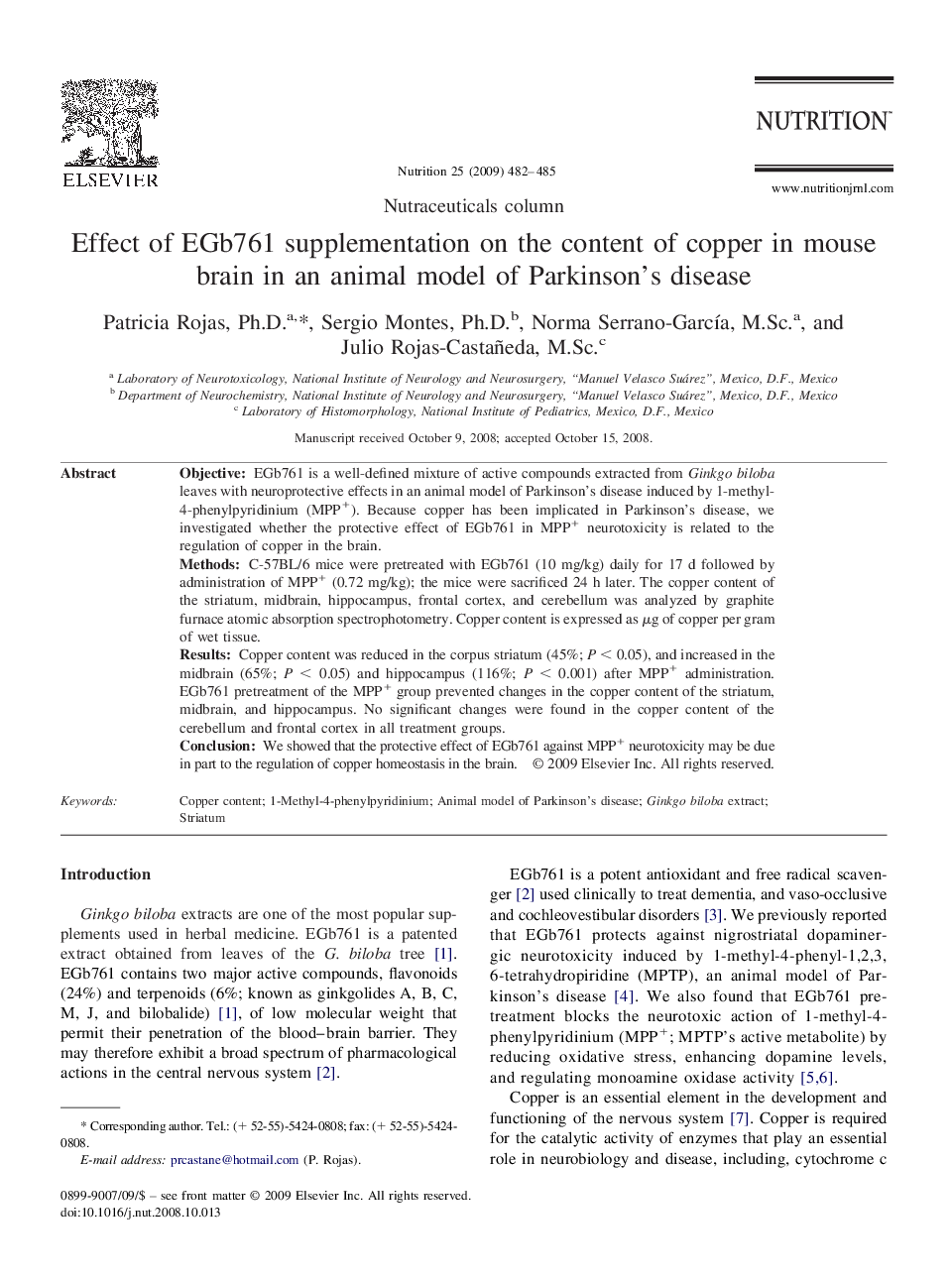| Article ID | Journal | Published Year | Pages | File Type |
|---|---|---|---|---|
| 3277113 | Nutrition | 2009 | 4 Pages |
ObjectiveEGb761 is a well-defined mixture of active compounds extracted from Ginkgo biloba leaves with neuroprotective effects in an animal model of Parkinson's disease induced by 1-methyl-4-phenylpyridinium (MPP+). Because copper has been implicated in Parkinson's disease, we investigated whether the protective effect of EGb761 in MPP+ neurotoxicity is related to the regulation of copper in the brain.MethodsC-57BL/6 mice were pretreated with EGb761 (10 mg/kg) daily for 17 d followed by administration of MPP+ (0.72 mg/kg); the mice were sacrificed 24 h later. The copper content of the striatum, midbrain, hippocampus, frontal cortex, and cerebellum was analyzed by graphite furnace atomic absorption spectrophotometry. Copper content is expressed as μg of copper per gram of wet tissue.ResultsCopper content was reduced in the corpus striatum (45%; P < 0.05), and increased in the midbrain (65%; P < 0.05) and hippocampus (116%; P < 0.001) after MPP+ administration. EGb761 pretreatment of the MPP+ group prevented changes in the copper content of the striatum, midbrain, and hippocampus. No significant changes were found in the copper content of the cerebellum and frontal cortex in all treatment groups.ConclusionWe showed that the protective effect of EGb761 against MPP+ neurotoxicity may be due in part to the regulation of copper homeostasis in the brain.
